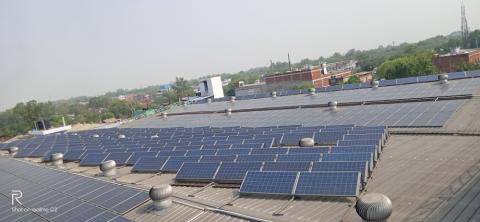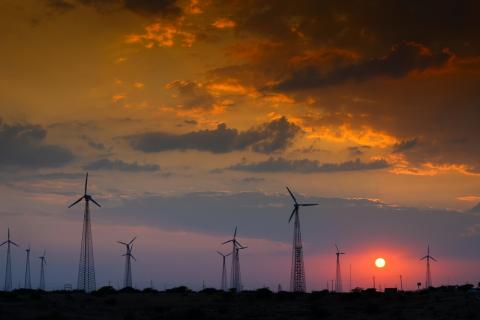Despite pandemic disruptions, India's renewable energy sector is still primed for growth
Download Full Report
View Press Release
Key Findings
India is a global renewable energy leader. The government of India’s long-term objective of 450 gigawatts (GW) of renewable energy capacity by 2030 has set the country on a path to a modern, low-cost renewable energy-based power system, building energy security and decarbonising in the process.
Key to this ongoing transition in India’s power market, aided by the government’s long-term ambition, is a significant deflation in wholesale power tariffs of renewable energy sources of wind and solar power globally.
Executive Summary
India is a global renewable energy leader. The government of India’s long-term objective of 450 gigawatts (GW) of renewable energy capacity by 2030 has set the country on a path to a modern, low-cost renewable energy-based power system, building energy security and decarbonising in the process.
Key to this ongoing transition in India’s power market, aided by the government’s long-term ambition, is a significant deflation in wholesale power tariffs of renewable energy sources of wind and solar power globally.
From the fiscal year (FY) 2017/18 India’s renewable energy sector saw a dramatic deflation in renewable energy tariffs – achieved through transparent, reverse auctions with well-defined contractual terms and pre-bid registration of qualified participants.
Solar power tariffs as low as Rs2.44/kWh (US$35/kWh) in the Solar Energy Corporation of India’s (SECI) Bhadla Solar Park auction in May 2017 reinforced the ambition to accelerate capacity building. More than 90% of the 30GW of renewable capacity installed since the beginning of FY2017/18 and an additional 30-35GW auctioned to date, has been contracted for tariffs of Rs2.36-3.00/kWh with zero indexation for 25 years – 20-30% less than average domestic thermal tariffs of Rs4-5/kWh (US$55-65/MWh). As a point of comparison, NTPC, one of the better thermal power operators with better access to domestic coal linkages, reported an average tariff of Rs3.90/kWh for FY2019/20.)
Given a promising FY2017/18 with 11.8GW of on-grid renewable energy capacity commissioned during the year, capacity additions were expected to accelerate to 15-20GW annually. However, renewable energy capacity growth has been underwhelming with only 8.6GW and 9.4GW of on-grid additions in FY2018/19 and FY2019/20. And with a dramatic collapse in electricity demand due to COVID-19, FY2020/21 has so far been another underwhelming year.
IEEFA notes that a number of policy-related headwinds and slower-than-expected electricity demand growth have impacted the growth of renewables in the last couple of years.
The collapse of India’s electricity demand growth, in fact, precedes the start of the country-wide lockdown in March. Electricity demand grew just at 0.7% in FY2019/20, significantly below the historic annual demand growth level of 5-6% over the last decade. The pandemic has made a bad situation worse, resulting in significant excess capacity. India’s electricity demand growth between April and July 2020 was -10.7% compared to the same period last year.
India is still in the grip of the pandemic and clearly all forecasts of long-term electricity demand growth have been materially undermined. A recent report from The Energy Resource Institute (TERI) predicts India’s electricity demand could be 7-17% lower by 2025 than previously expected demand levels.
Thermal power generation has taken the majority of the downside hit of the declining demand during the period between April and July 2020. Thermal power generation was down by 17.8% year-on-year for the above period whilst renewable generation was only down by 1.7%. The downside impact on renewable generation is partly due to higher generation from hydro power, which is up 6.8% on the back of this year’s extraordinary monsoon season in India.













